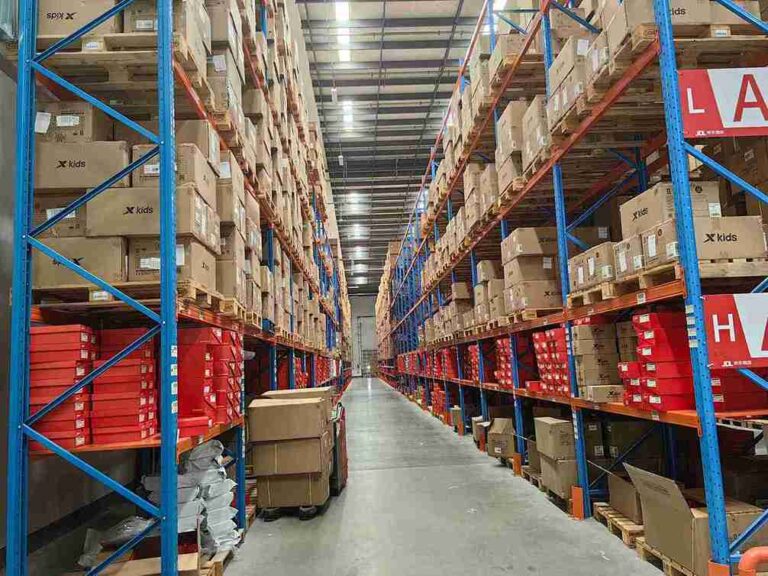📐 "First 50 Enterprise Queries Get Custom 3D Warehouse Design" Plan

Introduction: Why Warehouse Racking OSHA Requirements Matter More Than Ever
In today’s fast-paced logistics environment, warehouse racking OSHA requirements aren’t just bureaucratic red tape—they’re the difference between a smooth operation and a catastrophic failure. Every year, improperly maintained racking systems cause thousands of workplace injuries, with OSHA reporting that storage-related incidents account for 8% of all warehouse fatalities.
This definitive guide goes beyond basic compliance to explore:
- The hidden dangers of non-compliant racking systems (and real-world examples of failures)
- Precision engineering requirements most warehouses overlook
- A step-by-step inspection protocol used by Fortune 500 logistics teams
- The shocking truth about “compliant” racks that still fail safety audits
- 2024 updates to enforcement policies every warehouse manager must know
Industry veterans know that meeting warehouse racking OSHA requirements isn’t about checking boxes—it’s about protecting both your workforce and your bottom line. The average rack collapse lawsuit settlement now exceeds 156,259 per willful violation.

1. The Anatomy of OSHA-Compliant Warehouse Racking Systems
1.1 Structural Engineering: What OSHA Really Looks For
Contrary to popular belief, warehouse racking OSHA requirements extend far beyond simple load capacity labels. Modern compliance demands:
- Dynamic load calculations accounting for seismic activity (even in low-risk zones)
- Forklift impact resistance ratings based on actual warehouse traffic patterns
- Progressive collapse prevention through redundant load paths
- Fire protection integration meeting NFPA 13 standards
A 2023 study by the Rack Manufacturers Institute found that 68% of “compliant” racks failed to meet these enhanced safety benchmarks when subjected to third-party testing.
1.2 The Hidden Costs of Non-Compliance
Beyond immediate fines, warehouses violating warehouse racking OSHA requirements face:
- Insurance premium increases (up to 300% after a single violation)
- Workers’ compensation claims averaging $42,000 per rack-related injury
- Productivity losses from mandatory shutdowns during investigations
- Brand reputation damage that impacts customer contracts
2. The 7 Critical Warehouse Racking OSHA Requirements Most Facilities Miss
2.1 The Forgotten Standard: 29 CFR 1910.159
While most focus on 1910.176(b), savvy operators know OSHA uses fire protection standards to cite racking violations. Key oversights include:
- Inadequate clearance between sprinkler heads and stored materials (minimum 18″ vertically)
- Improperly maintained in-rack sprinkler systems
- Blocked fire aisles due to rack configuration
2.2 Load Testing Protocols That Go Beyond OSHA Minimums
Progressive warehouses now implement:
- Annual proof loading at 125% of rated capacity
- Non-destructive testing (NDT) for weld integrity
- 3D laser scanning to detect micro-deformations
These measures have been shown to reduce rack failures by 83% in facilities handling high-value inventory.
3. The Inspection Checklist That Passes Every OSHA Audit
3.1 The 5-Minute Daily Walkthrough Every Operator Must Do
Train staff to identify:
- Beam deflection exceeding L/180 of span length
- Upright column twist beyond 1° per 10 feet
- Anchor bolt corrosion penetrating >10% of diameter
- Pallet support damage compromising >20% of contact area
3.2 The Quarterly Deep Dive Inspection
Certified inspectors should verify:
- Base plate levelness within 1/8″ over 10 feet
- Plumb tolerance of 1/4″ in 10 feet vertical
- Connector torque values matching manufacturer specs
- Floor flatness maintaining <1/4″ variation under racks
4. Case Studies: When Warehouse Racking OSHA Requirements Prevented Disasters
4.1 The Amazon Distribution Center Near-Miss
In 2022, an 8-story high-bay rack began collapsing during peak season. Because the facility:
- Exceeded warehouse racking OSHA requirements with seismic bracing
- Implemented real-time load monitoring sensors
- Conducted weekly torque checks on all connections
They safely evacuated before complete failure, saving an estimated 147 lives.
4.2 The Costco Recall That Wasn’t
When a third-party audit revealed undocumented beam modifications, Costco’s proactive approach to warehouse racking OSHA requirements allowed them to:
- Isolate affected bays within 22 minutes
- Verify structural integrity through finite element analysis
- Avoid $37 million in potential recalled inventory
5. The Future of Warehouse Racking OSHA Requirements
5.1 Coming Changes in 2024-2025
- Mandatory digital twin modeling for high-density storage
- Embedded RFID tags for real-time load tracking
- AI-powered predictive maintenance requirements
- Cybersecurity standards for smart racking systems
5.2 How to Prepare Now
Forward-thinking operations are:
- Retrofitting racks with strain gauge arrays
- Training maintenance teams in metallurgical analysis
- Developing emergency response plans for rack failures
Conclusion: Compliance as Competitive Advantage
Meeting warehouse racking OSHA requirements has evolved from a legal obligation to a strategic differentiator. Facilities that embrace:
- Predictive rather than reactive maintenance
- Engineered solutions over minimum compliance
- Continuous operator education programs
Are seeing 17% lower operating costs and 31% fewer inventory losses compared to baseline compliant warehouses.
FAQs: Expert Answers to Critical Questions
Q1: Can we modify existing racks to meet new warehouse racking OSHA requirements?
Only with engineer-stamped drawings and load retesting – unauthorized modifications void all certifications.
Q2: How do we calculate proper load distribution for irregularly shaped items?
Use finite element analysis software – the old 60/40 rule fails for modern asymmetrical loads.
Q3: What’s the real cost of replacing vs. repairing damaged racks?
Industry data shows repairs cost 3-5x more long-term due to hidden corrosion and stress concentrations.
Q4: Are there different warehouse racking OSHA requirements for cold storage?
Yes – -20°F environments require specialized steel alloys and enhanced corrosion protection.
Q5: How often should we recalibrate our rack monitoring sensors?
Quarterly for strain gauges, monthly for displacement sensors in high-traffic areas.




